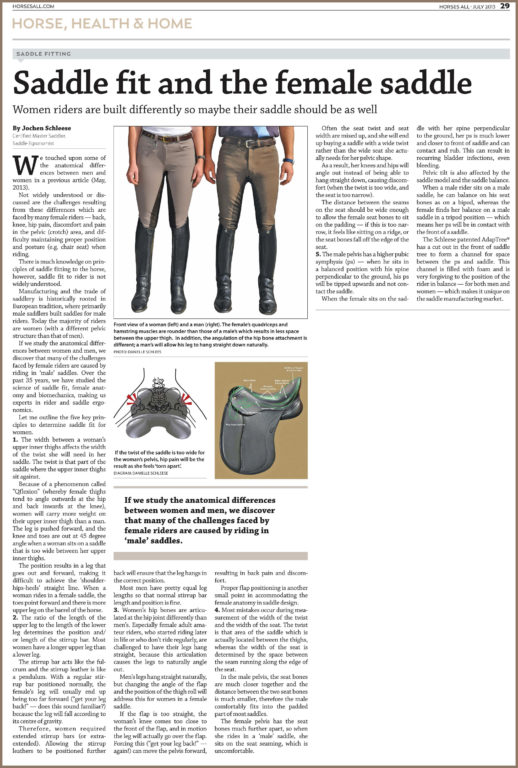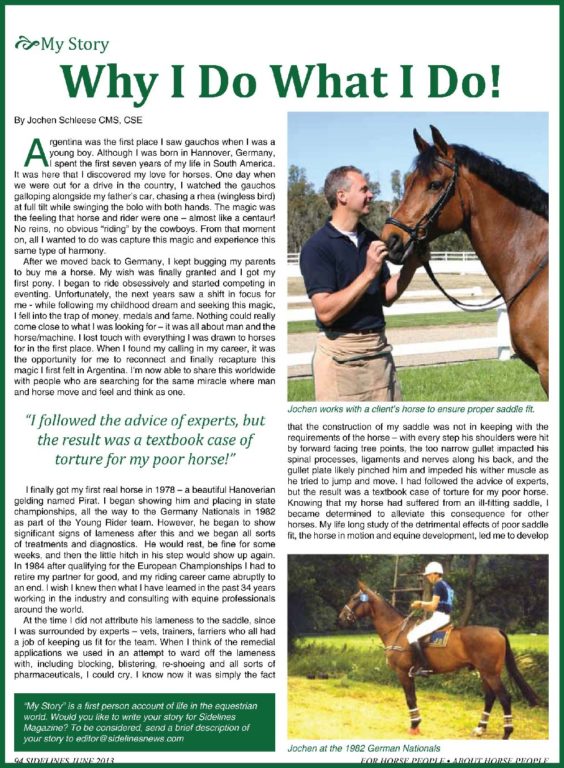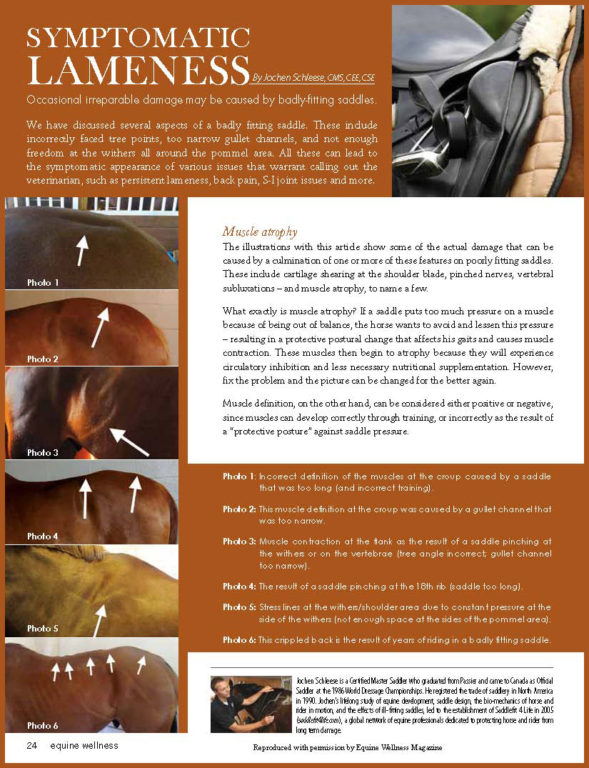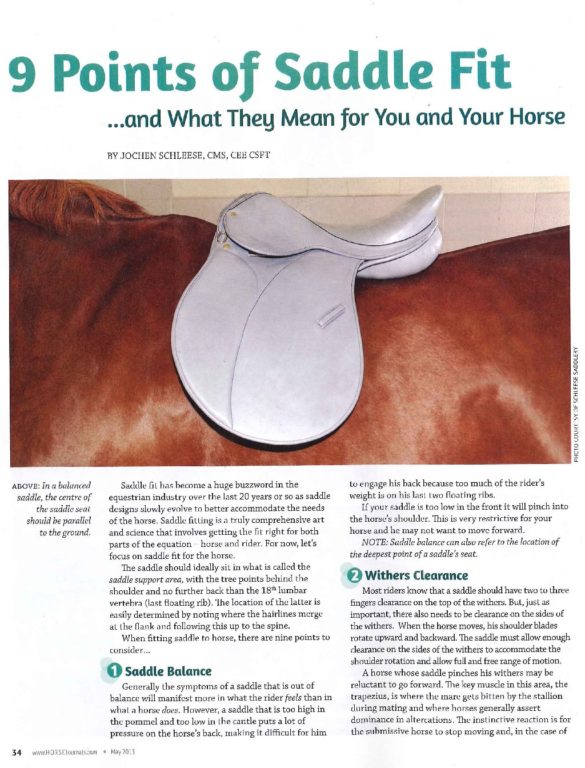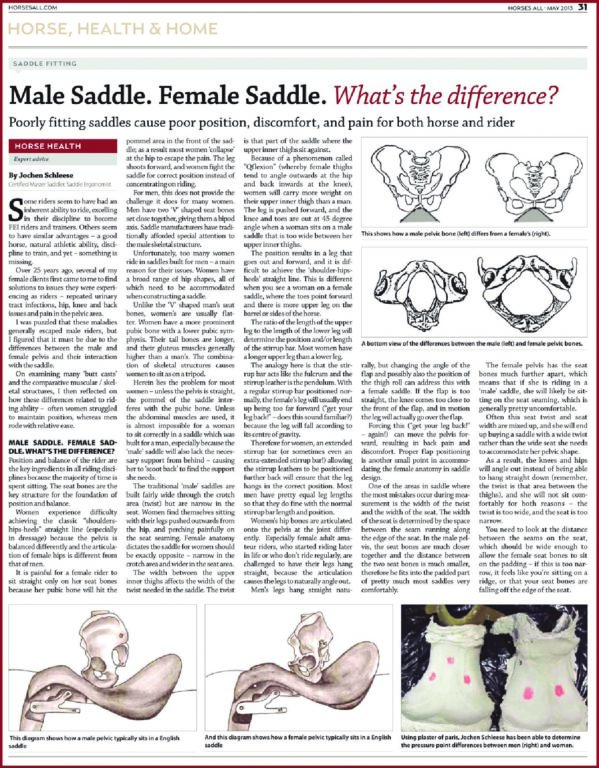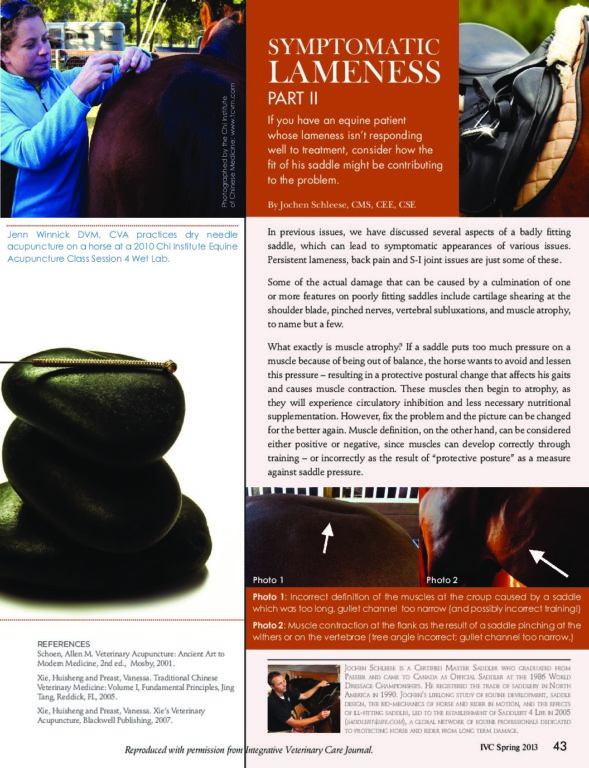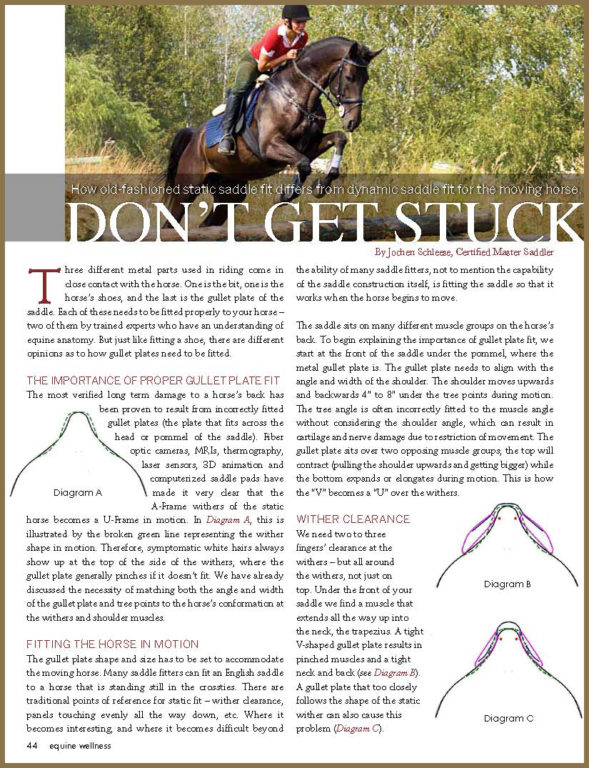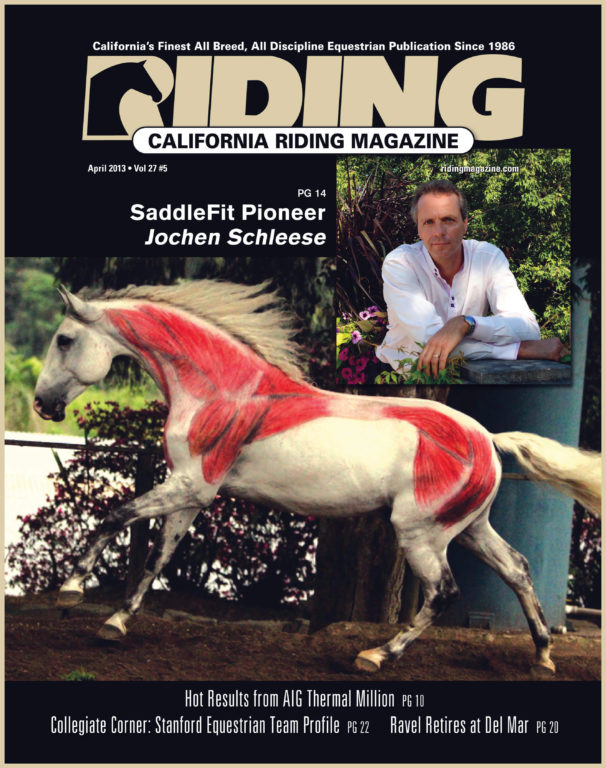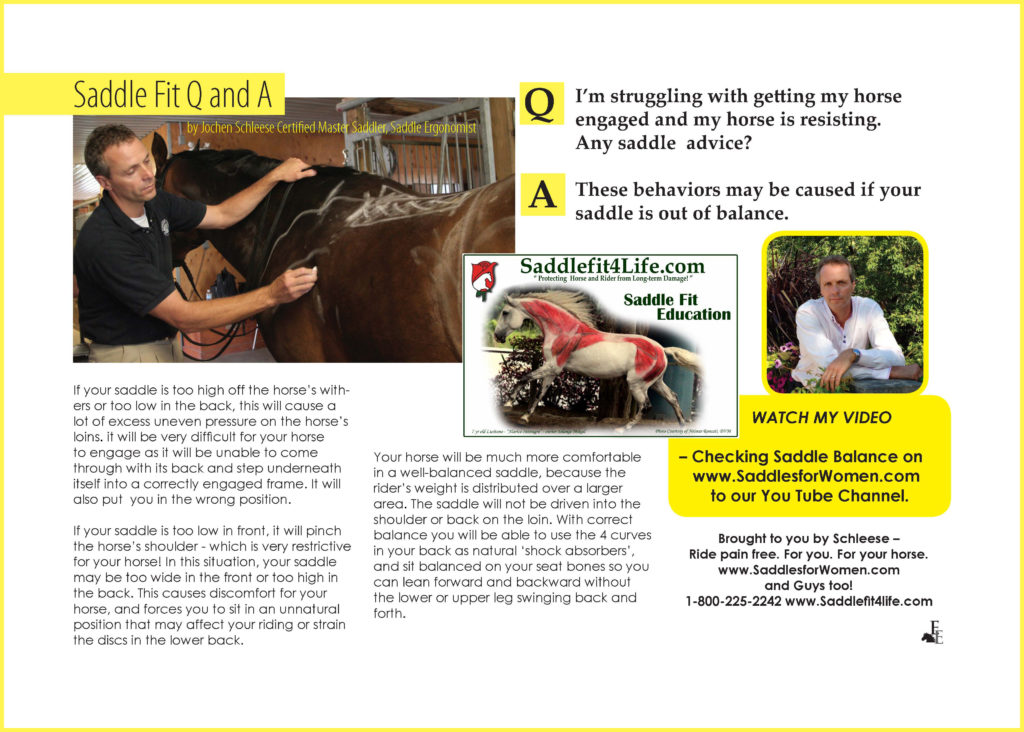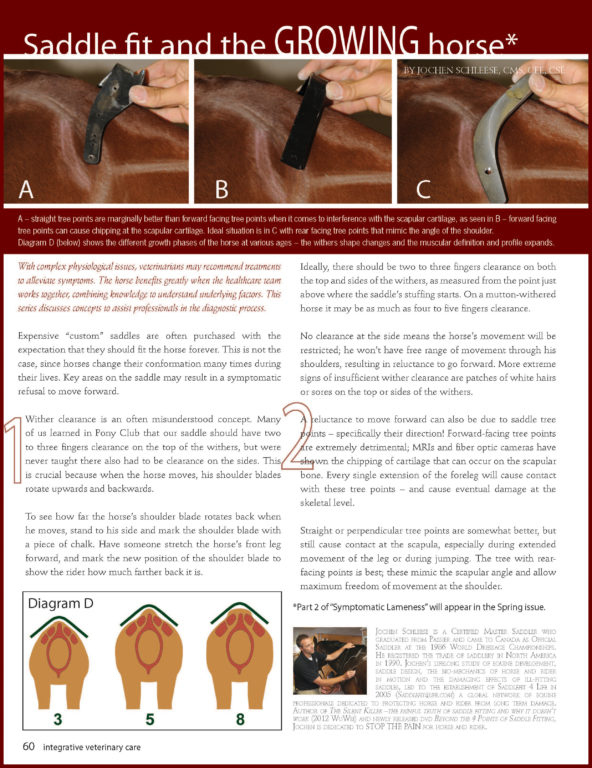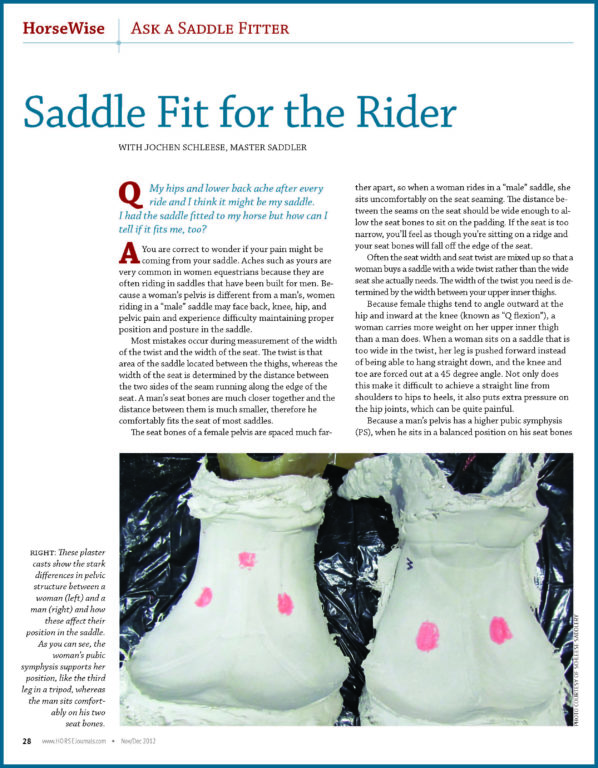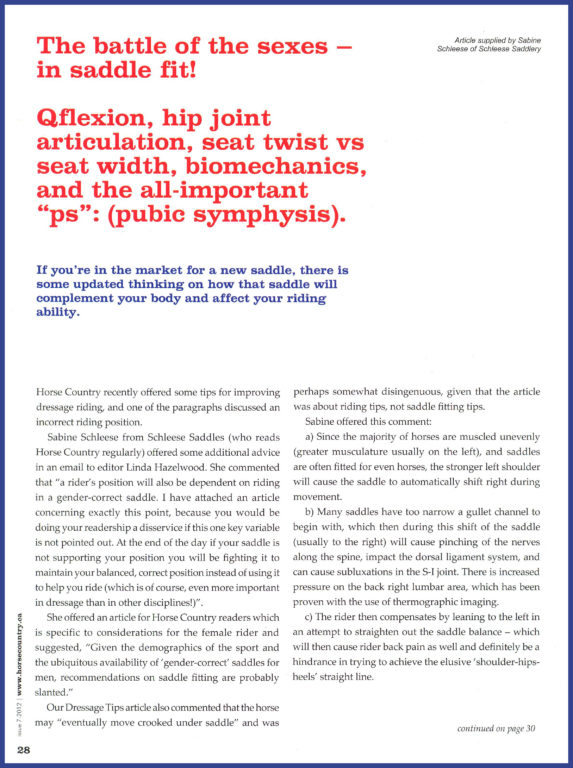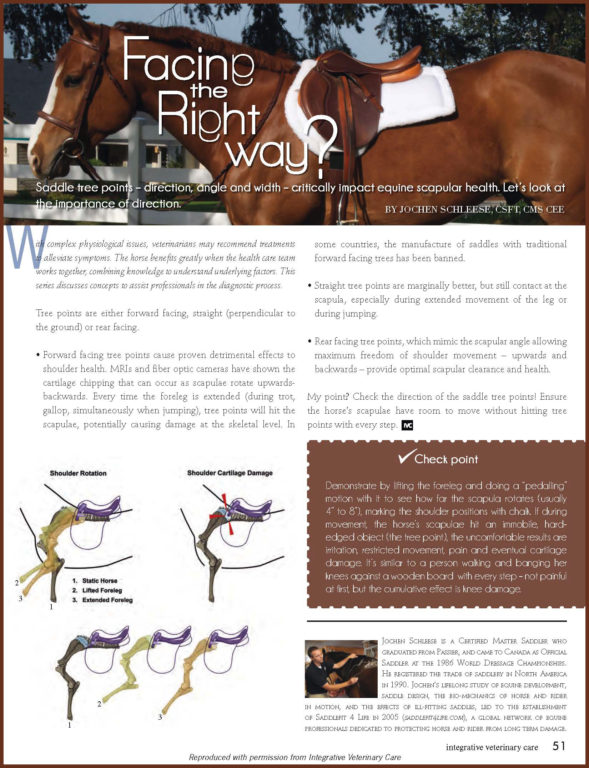- Horses All - Horse, Health and Home
We touched upon some of the anatomical differences between men and women in a previous article (May, 2013). Not widely understood or discussed are the challenges resulting from these differences which are faced by many female riders – back, knee, hip pain, discomfort and pain in the pelvic (crotch) area, and difficulty maintaining proper position and posture (e.g. chair seat) when
riding. There is much knowledge on principles of saddle fitting to the horse, however, saddle fit to rider is not widely understood…

